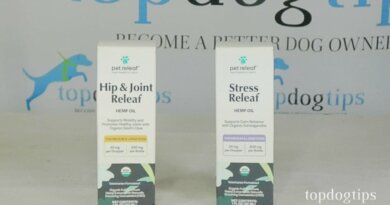A Holistic Approach to Inflammatory Bowel Disease
Inflammatory Bowel Disease (IBD) is not a true diagnosis. Rather, it encompasses a conglomeration of inflammatory digestive issues associated with a variety of causes. Patients often present with vomiting, diarrhea fluctuating with constipation, regurgitation, discolored lips or gums, gas, abdominal pain, and/or loss of appetite.
In holistic medicine, many potential imbalances may contribute to IBD, including:
•Food allergies. Protein sensitivities can change over time. Egg, chicken, grains, beef and fish are common culprits.
•Microbiome disruption. This can be the result of poor genetics, poor early nutrition, and/or overmedication with antibiotics or other microbe-affecting medications.
GET THE BARK IN YOUR INBOX!
Sign up for our newsletter and stay in the know.
•Excess emotions. Worry, anger or fear can upset digestion.
•Conditions identified by Traditional Chinese Medicine. These include Liver Qi Stagnation, Spleen Damp Heat, Stomach Yin Deficiency and Rebellious Stomach Qi, Liver Fire or Liver Yin Deficiency, or Shao Yang Blockage (gallbladder/triple heater) from a toxic insult like flea medications or over-vaccination.
As demonstrated in the following account of a Golden Retriever afflicted with IBD, by identifying and treating its underlying causes, we can cure the syndrome instead of simply suppressing its symptoms.
GRACIE
In the next room, I heard retching and hacking and the voice of a worried client, “Gracie I am so sorry you are sick.” As I entered the exam room, I met an emaciated Golden Retriever listlessly resting on the exam room floor. Her person, Steve, sat upright beside her, clearly worried about the state of “his girl.”
Even though Gracie hadn’t eaten for days, she dry-heaved to the point of exhaustion. I reviewed the thick paper record provided. Gracie had spent the last ten days at a large referral clinic in the care of a team of internal medicine specialists, but her condition had continued to deteriorate. Steve had never used so much as a chiropractor, so coming to a holistic vet was a stretch. The owner of a local pet store had convinced him to seek me out as a last resort. So there we were, the computer programmer and the holistic veterinarian, as different as two people could be, with a vomiting Golden Retriever connecting us.
Gracie had always had a sensitive stomach, but after she received three vaccines and a flea medication all in one day at the conventional vet office, her vomiting dramatically increased. Within two weeks, she was vomiting much of her food and water and had constant diarrhea. Just like other Goldens I had seen over the years presenting with extreme symptoms, Gracie made sure hers could not be ignored. Known for their acute manifestations of illnesses, Golden Retrievers are infamous for developing overnight severe symptoms like a giant ulcerative hot spot or five-star ear infection.
Steve had obviously been crying, his red eyes dry now from his own fatigue. He removed his glasses and crouched beside Gracie. As we talked about her health, he ran his fingers through the fine blond feathers behind her legs. He explained that Gracie had not responded to steroid therapy, immune-suppressive azathioprine or antibiotics while at the hospital. To make matters worse, her liver enzymes increased as a result of all the medications.
Together, Steve and I studied something he saw every day but never really noticed—Gracie’s tongue. The art and science of tongue observation is fundamental to establishing a diagnosis in Chinese medicine. I gently lifted Gracie’s upper lip to note the color of her tongue. “See how her tongue is purple compared to her gums?” I asked. I showed Steve a chart of a dog’s tongue illustrating where the health of each organ system is depicted: in the back of the tongue, we studied the kidney function, on the sides, the liver, the center, the spleen and on the inner sides, the lung and the very tip of the tongue correlates to the heart. While the lavender tone was easy to see, fissures along the center were harder to appreciate. I explained a purple tongue indicates stagnation, helpful in deciding which herbal protocol to prescribe.
In my mind, I reviewed possible holistic treatment approaches. “Has she ever had anal gland problems?” I asked, equating them with the propensity to develop damp heat, a common cause for diarrhea.
“Yes, early on. She did. She scooted and needed them expressed every month,” Steve said.
“Okay, anal gland problems can be an early marker for colitis and/or inflammatory bowel disease. Any other unusual problems in her history?”
“When she was young, she had a bad case of giardia that took us ages to cure,” he said. It was common to see chronic giardia affecting dogs with food allergies and IBD. So much so, I had wondered if in dogs, giardia was an opportunistic organism, preferentially seeding in diseased intestinal linings.
“She rubbed her face along the sides of the room after she ate. Did that mean something too?” Steve asked.
“It can indicate food allergies but sometimes, it’s just a fun game dogs play.”
“Well, she nibbled at her toes, too,” Steve admitted. I agreed she may have been showing early, mild and superficial symptoms of food allergies as a puppy. The body is like an elephant. It doesn’t forget. It can push the allergy deeper, pushing the inflammation intestinally instead of staying in the skin.
“I think I can help, but it will be a lot of work on your end. Her system is too fragile for synthesized amino acids, and a commercial diet probably won’t work in this situation. You are going to have to make Gracie’s food yourself.” Gracie’s severe intestinal inflammation was probably caused by food allergies and had led to an imbalanced bacterial flora, decreased levels of pancreatic enzymes and accumulation of toxins, all leading to a perfect storm.
“If you said to skip rope down the alley, I’d gladly do it for Gracie,” Steve said, determined to help his dog.
We performed NAET allergy testing and found Gracie had amino acid problems as well as a severe chicken allergy. Ironically, the internal medicine specialist had prescribed a hydrolyzed chicken-based diet. Even though the proteins in these hydrolyzed diets are treated with acid in an attempt to denature them, dogs can still react to the allergens. Gracie’s intestinal tract was not so easily fooled.
“Have you seen any blood in her vomit or stools?” I asked.
“Sometimes I have, yes.”
Since we needed to keep Gracie off food for twelve hours after the treatment, I wanted to start her on something to relieve the symptoms, and homeopathy would be useful since it’s most effective on an empty stomach. I explained that Gracie’s exposure to toxins and the small amount of blood in her vomit were indications for the homeopathic Phosphorus 30C.
Within holistic medicine, each treatment modality has its own rules and biases. The classic homeopathic doctrine says not to combine treatment modalities, but I often prescribed remedies alongside my other therapies. Energetic patterns are essential for each approach and the use of multiple treatment techniques can be complicated to navigate, but combining them can often bring about excellent results. After giving Phosphorus 30C, we went on to complete the NAET allergy testing. In addition to chicken, Gracie was allergic to grains, egg, beef, pork, lamb and certain minerals. At the time, I decided Gracie was too fragile for a NAET allergy clearing because it could temporarily exacerbate her symptoms. To be safe, I decided to spend most of the hour doing acupuncture, vitamin injections and discussing Gracie’s diet.
I recommended a slurry of bison, turnip, burdock root, parsley and cilantro (for heavy metal detoxification) and goat milk kefir to be fed in small amounts four times a day. Many dogs are allergic to dairy products but, based on muscle testing, I felt Gracie could have a small amount of goat (not cow) kefir for its probiotic benefits. Natural sources of probiotics are far superior to bottled or commercial sources, especially in a debilitated patient.
“I don’t think she’ll eat anything.” Steve said. “Her appetite is not good.”
“Let’s see what an acupuncture treatment and vitamin B12 injection can do to remedy that.” Both would increase her appetite. I began the acupuncture based on her energetic pattern of damp heat and spleen chi deficiency. I needled points to tonify her spleen, resolve damp heat: Stomach 36, Spleen 6, Liver 5, Bladder 20 and 21, Large Intestine 11, Triple Heater 3.
During the treatment, I asked Steve to describe some of his favorite moments with Gracie in an effort to focus on positive aspects of the dog’s life. He discussed how Gracie loved to retrieve balls. Once she jumped into a pond and came out covered in green slime with a pink ball protruding from her cheek. We smiled at the thought of a green slimy Golden. I removed the needles and finished the session by injecting some of the points with a small amount of vitamin B12 to enhance her appetite and immunity, strengthen her weak nervous system and support her healthy intestinal flora.
The digestive panel the internal medicine specialist ran showed what it usually shows in these cases. Gracie had a low B12 level and an infection of Clostridium difficile or “C. diff.” Conventional medicine considers this infection as one of the causes of IBD, but holistic medicine views it as an opportunistic organism, an example of ‘bad’ bacteria that is often present due to the level of intestinal disruption.
From the conventional standpoint, suppressing the symptoms is the primary treatment and, ironically, the more expensive and specialized the veterinarian, the stronger the anti-inflammatory medications with more potential for adverse side effects. Holistic medicine gently supports the healthier aspects of Gracie’s digestion, avoiding food allergies, building healthy bacteria and increasing secretion of pancreatic enzymes.
I sent Steve home with a bag of herbal tea to infuse for Gracie. It included mint for abdominal pain, tulsi, lemon balm, ginger to regulate transit time, elecampane for its bitter action to increase enzyme secretion, and a cold infusion of shepherd’s purse and marshmallow root to stop the bleeding. I also sent Steve home with the Chinese formula Xiang Lian San, which would help resolve her diarrhea and calm her damp heat.
Two days later, I checked in with Steve to update me on Gracie’s digestive symptoms. According to him, Gracie was holding down small amounts of goat milk and rice but was still struggling with diarrhea and had very little energy. I suggested that Steve give her two pellets of Arsenicum album 30C three times a day, which he could pick up at the local health food store. In Gracie’s chart, I noted, Gracie. Stomach improved (no vomiting) but diarrhea consistent. Next appt: NAET treatment: amino acids. I liked to come up with a few ideas ahead of time and choose one based on the patient’s specific pattern of imbalance at the next visit.
For the first few weeks, Steve struggled with Gracie’s appetite. We decided she had already ingested too many pharmaceutical medications, so conventional appetite stimulants were out of the question. Instead, baby step by baby step, as though Gracie’s gut was a new garden, we nourished her good bacteria and beneficial gut yeast with goat kefir and we encouraged pancreatic digestive enzyme production with acupuncture, diet and herbs.
Two weeks after Gracie began the homemade diet, her tongue color began to normalize and the inflammation subsided, but she still struggled with intermittent diarrhea. Vitamin B12 injections and acupuncture gave her temporary relief for a few days, boosting her appetite and reducing her digestive sensitivity. Since herbal therapies had been difficult to administer due to her poor appetite, Steve resorted to packing empty gel capsules with the herbal powders and giving the capsules directly into Gracie’s mouth several times a day.
In the mornings, Steve blended a smoothie of turkey baby food, goat milk and kefir and a new combination of western herbs: cat’s claw, marshmallow root, wild yam, carob (not chocolate) and peppermint powders. According to Ayurvedic medicine, Steve’s positive intent is almost as important as the medications themselves. Gracie would sit in the kitchen watching him work, somehow knowing it was all to help her, and seemingly agreeing to work just as hard at getting better herself.
The third week, however, we came to a obstruction in the road to healing. Steve sighed, having been up half the night with Gracie’s diarrhea. “I just don’t think she’s getting better,” he said, sinking to the floor.
“But Steve, Gracie’s gained two pounds. That’s amazing!” When I looked at the dog I saw a vibrant, healed girl in the making, four paws headed to the mountains for hikes again, big yellow tail up high wagging in the chilly mountain air, ready for another adventure. Visualizing good health was important in the dog’s healing.
But I was worried by the way Steve gazed blankly beyond me, blocking all my efforts with doubt and pessimism.
“Have you ever gotten food poisoning yourself? How long did it take you to feel better? Just think, food poisoning is nothing compared to this.” It will take weeks for Gracie’s biome to normalize, for the cells in her stomach to produce enough acid again, for her pancreas to heal to produce enzymes, for the lining of her digestive tract to lose the thickened layer of inflammation, for her liver lysosomes to genetically shift to a more functional state. “She needs more time.”
I encouraged Steve to try to let go of his own ideas and expectations. Western medicine had taught Steve the unfortunate lesson of impatience, and immediate results from a pill. “Remember, when we get a cure, it will be permanent,” I assured him, having experienced holistic healing myself.
Steve reluctantly agreed. I prescribed an extra half-dropper of wild yam tincture to her morning and evening gruel and an increased dose of Xiang Lian San twice a day. I treated Gracie with NAET for a different set of amino acids. And we switched from turkey to guinea hen, a more novel protein. I hoped correlating a protein change with a NAET amino acid clearing would be effective for Gracie.
Three weeks later, Gracie literally trotted in for her acupuncture treatment as though she owned the place. She came in wagging her tail and licked my hand. It was her way of thanking me. As she wrestled with a stuffed ball Steve pulled from his cloth bag, her blond hair flowed with the movement of an activity Steve had not seen in weeks. We were transfixed watching the dog. Gracie was actually playing.
As I watched Gracie’s antics, I felt grateful. I thought about all the nuanced treatments we implemented to help Gracie, how her prednisone had been replaced by herbal therapies and how healthy she had become. To be able to treat inflammatory bowel disease in two different patients and give them long, happy lives without dependence on long-term pharmaceuticals would give me strength to help the dog scratching in the waiting room.
“Gracie” excerpted from Zen and the Art of Caring for Pets © 2020 by Donna Kelleher. Used with permission.



